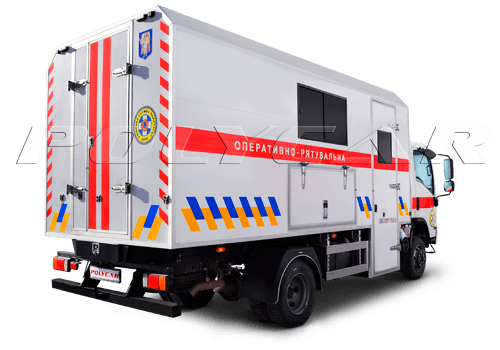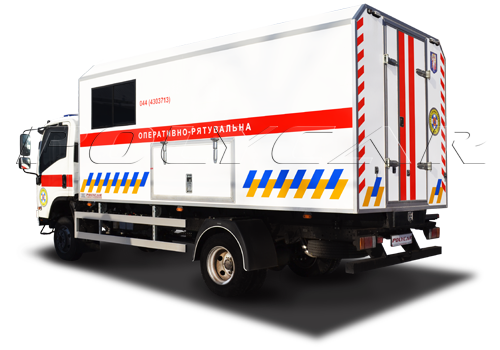Several separate compartments: passenger, technological and niches for equipment.

The passenger compartment includes: boarding seats, a table, a wardrobe, communication with the driver, heating, air conditioning, lighting, ventilation systems, etc.







The technological compartment includes: a workbench, tool boxes, racks for equipment.

Technological niches for the transportation of rescue equipment and various tools.

An emergency-rescue diving service vehicle is a specialized vehicle designed to transport a brigade of divers and their equipment to the places of emergency repair or rescue operations.
The design of this car implies the presence of several compartments: passenger, technological and various types of niches. The passenger compartment provides seats for a diving service team, a table, wardrobes, communication systems with the driver, a heating system, air conditioning, lighting, etc.
The technological compartment is designed to transport equipment and perform certain types of work. In this regard, it provides racks for equipment (with the possibility of rigid fixation) and special clothes, tool boxes, workbenches, etc. In most cases, such cars have niches for transporting a generator and various equipment with access from outside.
Since this is an emergency vehicle, it also has light panels, an SLS, a winch in the front and body pasting.
Технічні характеристики
| Compartments | passenger and technological |
| Passenger compartment | seats, a folding table, a cabinet |
| Technological compartment | a workbench, racks for equipment, tool boxes |
| Floor covering | sheets of corrugated aluminum |
| Electrical network | an autonomous generator or operation from an external network |
| Entrances | a separate door for each compartment |
| Technological niches | on both sides with access from outside |
| Systems | heating, air conditioning, lighting, communication with the driver |
| Wall sheathing | aluminum composite panels |
| Additionally | an SLS, light panels, body pasting, a winch |
